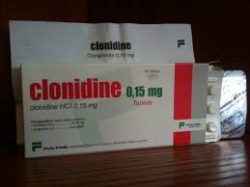According to Harvard Medical School, “The withdrawal symptoms” often associated with opiate dependence and addiction, including agitation, anxiety, tremors, muscle and bone pain, hot and cold flashes, gastrointestinal problems, and fever, “are not life-threatening, but are extremely uncomfortable.” They can be so uncomfortable, in fact, that they often cause individuals attempting to quit opioid drug use to return to the substance rather than weather the pain of withdrawal.
For these reasons, it is important that you talk to your doctor about the different medications that can help minimize your withdrawal symptoms if you have decided to stop taking opioids. But what are the best medications for opiate withdrawal treatment?
Buprenorphine
Compared to the other medications that treat the symptoms of opioid withdrawal, buprenorphine is relatively new, only having been first approved for clinical use in October of 2002 (Substance Abuse and Mental Health Services Administration). The medication is a partial opioid agonist, meaning that it has some of the properties of full opioid agonists, like oxycodone, methadone, and heroin, but that its effects are not as intense as those of the other substances. Buprenorphine is taken as a sublingual tablet that blocks the opioid receptors in the brain. This effect helps individuals with opioid withdrawal in three ways:
- It blocks them from being able to experience the effects of other opioids to an extent.
- It provides relief from cravings because it is communicating with the brain’s opioid receptors.
- It minimizes the painful and uncomfortable withdrawal symptoms by filling the void left by the opioids.
Buprenorphine, when taken at the correct dosage, does not cause euphoria or other dangerous effects like most opioids do, and in fact, it has a lower potential of causing these issues than full opioid agonists. “This ‘ceiling effect’ lowers the risk of misuse, dependency, and side effects.” However, buprenorphine is still abused by many individuals, which is why it is often prescribed as Suboxone. Suboxone contains both buprenorphine and naloxone, an opioid antagonist. When a person tries to abuse Suboxone by crushing and snorting it, the drug precipitates withdrawal to deter these types of actions.
Buprenorphine can be taken at a rehab center, but it is one of the only opioid withdrawal treatment medications that can be prescribed by a doctor and filled by a pharmacist. Doctors must have a special certification in order to prescribe buprenorphine, but it is often much more convenient for patients to receive the medication this way. Buprenorphine is very safe and effective, and once many patients become stabilized on the drug, they can begin to take lower and lower doses until they are completely off it.
Methadone
Methadone, unlike buprenorphine, cannot be prescribed in a doctor’s office and must be taken at a methadone clinic, often once a day. This causes a stigma that many individuals want to avoid, especially because methadone treatment has been used for opioid withdrawal and addiction for a long period of time and has been controversial over the years. Still, methadone is a very beneficial opiate withdrawal treatment medication for many individuals.
According to the National Library of Medicine, “Methadone is in a class of medications called opiate (narcotic) analgesics.” Methadone is a full agonist as opposed to buprenorphine, which means there is a much higher potential for methadone’s abuse. This is one of the reasons why it cannot be given anywhere other than in a methadone clinic. The medication treats opioid withdrawal symptoms in much the same way as buprenorphine does, blocking the opioid receptors so the brain will not crave the drugs or produce intense withdrawal symptoms.
Methadone is a much more beneficial treatment for those individuals who have been using and/or abusing opioids for a long period of time. As stated by SAMHSA, “Because buprenorphine is unlikely to be as effective as more optimal-dose methadone, it may not be the treatment of choice for patients with high levels of physical dependency.” Instead, methadone can be much more effective, but patients who take it must be very careful not to abuse the drug or they will very likely become addicted and dependent on it as well.
Certain individuals may stay maintained on methadone for several months, several years, or even indefinitely. Because some patients need the drug to treat their withdrawal symptoms all the time and would experience severe pain and discomfort without it, they will need to take methadone for a long time if not for the rest of their lives. However, a person can also be slowly weaned off methadone just as they can be taken off buprenorphine. Depending on the patient and their situation, methadone may be the necessary medication to treat severe withdrawal symptoms from opioid use and abuse.
Clonidine

Clonidine is also commonly used to treat opiate withdrawal.
Clonidine is commonly used to treat opiate withdrawal, but it is not an opioid drug itself. According to the NLM, it is in a class of medications called centrally acting alpha-agonist hypotensive agents. This is because it is also used to treat a number of other issues, including:
- High blood pressure
- ADHD
- Dysmenorrhea
- Tourette’s syndrome
- Menopause and menopausal symptoms
- Alcohol withdrawal
- Tobacco withdrawal
The drug does not affect the brain in the same way that the other two medications do when treating opioid withdrawal, but it is very effective all the same. The drug controls anxiety and tension through other parts of the brain as well as helps individuals going through withdrawal feel more relaxed in general, sleep better, and feel less restless. Clonidine also treats the muscle pain associated with opioid withdrawal by calming the body down and creating anesthesia-type effects. Because it is not an opioid itself, it also does not create a concern for abuse, as it does not cause euphoric effects when used.
Clonidine does not treat the gastrointestinal issues associated with opioid withdrawal, such as nausea, vomiting, and diarrhea, and unfortunately, it can cause some of these side effects on its own in users. When a patient does experience severe gastrointestinal issues while taking clonidine, however, doctors will usually prescribe another medication to help treat this issue.
Do You Want to Learn More About Medications for Opiate Withdrawal Treatment?
If you are interested in learning more about opiate withdrawal treatment and the kinds of medications involved, call 800-442-6158 Who Answers? today. We will help you choose the best medication for your withdrawal treatment needs.









